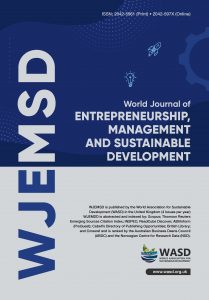(06) Defining state economic loss due to corruption within the Indonesian law: hurdle and solution, Dr. Taufik Rachman, Nur Basuki Minarno, Sapta Aprilianto, Hanif Muzaki
 Dr. Taufik Rachman
Dr. Taufik Rachman
Faculty of Law, Universitas Airlangga, Surabaya
Indonesia
Email: taufik@fh.unair.ac.id
Nur Basuki Minarno
Faculty of Law, Universitas Airlangga, Surabaya
Indonesia
Email: nur.basuki@fh.unair.ac.id
Sapta Aprilianto
Faculty of Law, Universitas Airlangga, Surabaya
Indonesia
Email: sapta@fh.unair.ac.id
Hanif Muzaki
Faculty of Law, Universitas Airlangga, Surabaya
Indonesia
Email: hanif.muzaki33@gmail.com
DOI: 10.47556/J.WJEMSD.19.1-2.2023.5
Design/methodology/approach: A descriptive-analytical strategy was employed in this investigation. This method made use of library research on rules and court decisions, and the information gathered was examined descriptively.
Findings: Despite the fact that the notion of state economy is articulated in the General Explanation of the Anti-Corruption Act, this study demonstrates that it remains inappropriate and confusing.
Research limitations/implications: The findings of this study are likely to serve as a model for future research or as a reference for judges interpreting the aspects of the state economy in the Indonesian Anti-Corruption Act.
Originality/value: This study demonstrates the parameters and guidelines for understanding the notion of damaging a country's economy, as well as explaining the meaning of harming a country's economy by identifying the definition of economic interests.
Keywords: Corruption, State Economic Losses, State Financial Losses.
Citation: Rachman, T., Basuki Minarno, N., Aprilianto, S. and Muzaki, H. (2023): Defining State Economic Loss Due to Corruption within
the Indonesian Law: Hurdle and Solution. World Journal of Entrepreneurship, Management and Sustainable Development, Vol. 19, No. 1/2,
pp. 53–67.

